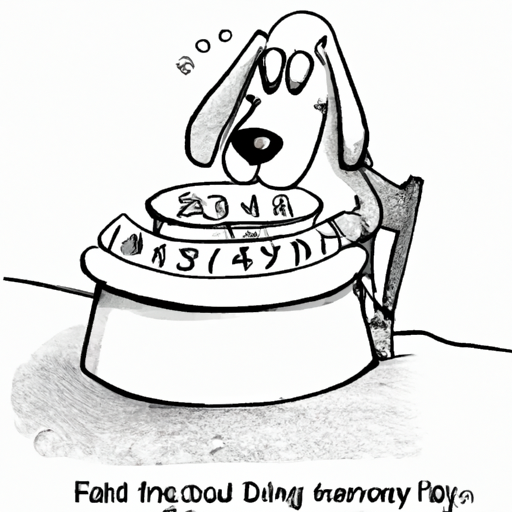As a caregiver, you might be wondering, how many times do dogs eat? This is a significant question as it pertains to the health and well-being of your furry companion. Just as humans need a balanced diet to stay healthy, so too do our canine counterparts. We’ll delve into the topic, covering everything from the number of meals a day to the kind of food your dog should consume.
- Dog Nutrition Basics
- How Often Should Dogs Eat
- Factors That Affect a Dog’s Meal Frequency
- Types of Dog Food
- FAQs
Key Takeaways
– The frequency of a dog’s meals depends on their age, health status, and lifestyle.
– Dogs, like humans, require a balanced diet.
– It’s essential to consult with a vet or a pet nutritionist when deciding on your dog’s diet.
Dog Nutrition Basics
When it comes to feeding your dog, there’s more to consider than merely filling their bowl with food. Different breeds, sizes, and ages of dogs have different nutritional needs. PetMD provides a comprehensive guide on the basics of dog nutrition.
In general, dogs require a combination of proteins, carbohydrates, fats, vitamins, and minerals to maintain a healthy life. These needs can be met through a mixture of dry kibbles, wet food, or even a balanced homemade diet.
How Often Should Dogs Eat
So, the pivotal question – how many times do dogs eat? According to American Kennel Club, puppies require more frequent meals – about three to four times a day. Once they reach adulthood, most dogs are fed two meals per day. Some dogs might even thrive on one meal a day, but this largely depends on their health and lifestyle.
Factors That Affect a Dog’s Meal Frequency
Several factors can influence how often your dog needs to eat. These include:
- Age: Puppies generally need to eat more frequently than adult dogs.
- Size and Breed: Larger breeds may require more food, but smaller meals can help prevent issues such as bloat.
- Activity Levels: Highly active dogs may need additional calories and thus, more frequent meals.
- Health Status: Dogs with certain health conditions may require specific feeding schedules.
For more personalized advice on feeding your dog, consider consulting a vet or a pet nutritionist. Websites like One Top Dog also provide valuable resources on dog care and nutrition.
Types of Dog Food
There are various types of dog food available in the market, and each comes with its pros and cons. To help you decide, here’s a basic breakdown:
- Dry Food: This is a popular choice due to its convenience and longevity. It also aids in keeping your dog’s teeth healthy. You can find more information about dry dog food here.
- Wet Food: Wet food is a great source of hydration and is particularly suitable for dogs who don’t drink enough water. More about wet dog food can be found here.
- Raw or Homemade Food: Some owners prefer to feed their dogs a raw or homemade diet. While this can have benefits, it’s important to ensure the food is balanced and safe. For more about homemade dog diets, check out this page.
Remember, the ideal diet for your dog depends on their specific needs. Always consult a professional before making significant changes to your dog’s diet.
Frequently Asked Questions
How many times should a puppy eat in a day?
Puppies generally need to eat three to four times a day. This frequency decreases as they grow older.
Can I feed my dog once per day?
While some dogs might be okay with one meal a day, it’s generally recommended to feed them at least twice a day. However, this can vary based on the dog’s age, health, and lifestyle.
What if my dog is always hungry?
If your dog always seems to be hungry, it might be worth consulting a vet. While it could be due to a high metabolism, constant hunger can also be a sign of health issues.
In conclusion, understanding how many times do dogs eat is vital in maintaining their health and happiness. By providing a balanced diet and adhering to a consistent feeding schedule, you’ll ensure your dog is both well-fed and content.



